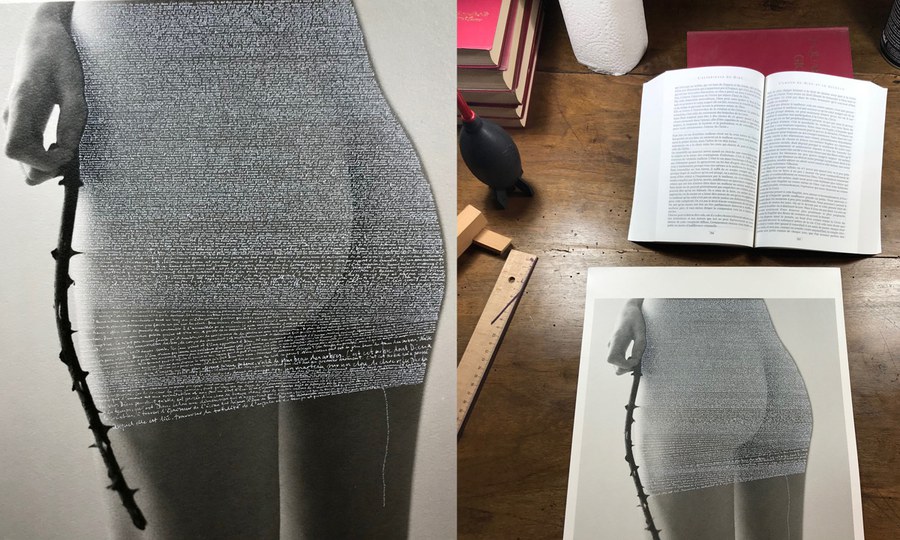I’ve arrived in my Italian atelier yesterday where I will spend a couple of days reading (a critical edition of Caterina da Siena’s 14th century ‚Dialogo‘ that I had ordered was awaiting my arrival) and starting a new Contemplation work. I haven’t yet definitely decided which text I’ll use, probably ‚The Book‘ of Margery Kempe, she was a 15th century mystic and her ‚Book‘ is the earliest surviving autobiography written in English. It’s not only an excellent – and rare – source of English mysticism (the English seem to always have been more rational even in religion compared to their continental contemporaries of different times), it also gives invaluable insights into the life of an ‚ordinary‘ woman of the Late Middle Ages, told by herself.
Which leads me to talking about two fundamental characteristics of all my Contemplations: all the texts I’m using are mystical texts (from the 11th till the 20th century), and they’re all written by women. I’ll talk about the first part another time, there’s a lot to say about mysticism which today is often misunderstood as something strange and esoteric.
But why only women? – There are male mystics of the highest importance: Pseudo-Dionysius the Areopagite, St. John of the Cross, Meister Eckart, John van Ruysbroeck or Henry Suso, just to name a few. While I do read and love their writings, I don’t use them for my works.
Using only texts by female authors came quite naturally for me, and it’s stongly connected to the fact that I’m only posting photos of women. There’s on the one hand the political reason: I love the idea of highlighting the thinkings of those who had to struggle to had their voices heard in completely male dominated structures (which is particularly true for the Church, not to mention even the Middle Ages). But even more than that, it’s a personal reason: I just always can connect more easily and deeply to a (it may be stereotypical in its own way to say this) female way of thinking and feeling. Just like for my photos: the women I photograph are never the women I want to ‚have‘, they’re always the women I want to ‚be‘, even if in an abstract way.
Thus, writing these texts (by women) on my photographs (of women) becomes a meditation of its own in which I’m „becoming-woman“ (thanks to Deleuze & Guattari for creating this concept) for the duration of the work. Bottom line: don’t worry for me disappearing in a monastery, I would feel like a foreign body among (male) monks…
Photo: final image and work in progress of ‚Nulle forêt ne porte un tel arbre‘ (2018, sold) with a text by Simone Weil („L’amour de Dieu et le malheur“), a 20th century philosopher, social activist and mystic whom I adore endlessly. She loved to suffer and so did I when I was copying her text on this photograph of mine as small as I could, with the smallest pen that I could find, „becoming-ink“, disappearing with impossible joy where the strata of thought and body collide in pure love…
